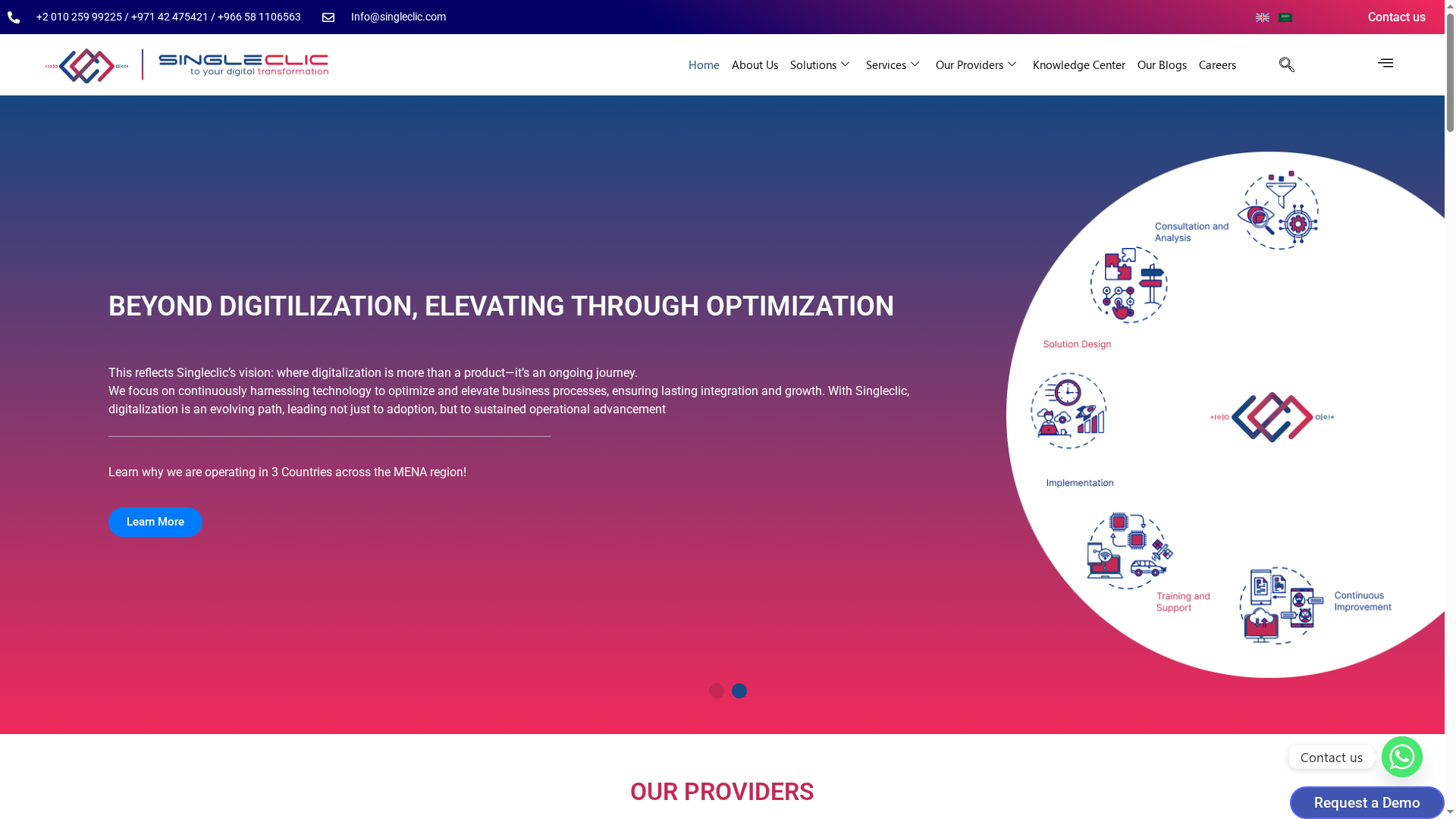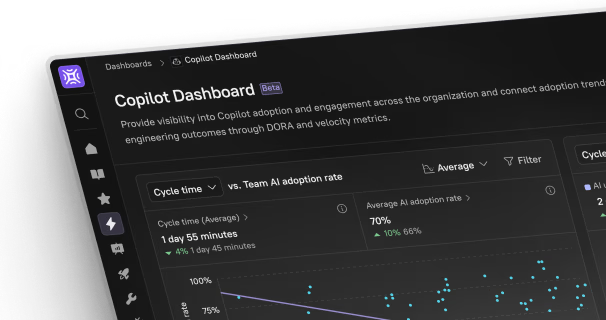Most digital transformation projects fail to deliver long-term success when processes are rushed into automation. In Saudi Arabia and UAE, where organizations are investing heavily in automation, skipping critical planning steps can result in costly mistakes. According to industry studies, automating flawed workflows leads to wasted resources and lower performance. This guide reveals practical strategies for mapping processes, setting clear objectives, choosing the best tools, and ensuring your automation journey truly boosts efficiency and resilience.
Table of Contents
- Map Critical Processes Before Automating
- Set Clear Objectives For Automation ROI
- Select The Right Tools For Industry Needs
- Prioritize Integration With Existing Systems
- Invest In Staff Training And Change Management
- Monitor Performance Metrics And Optimize Continuously
- Ensure Security And Regulatory Compliance
Quick Summary
| Takeaway | Explanation |
|---|---|
| 1. Map processes before automation. | Understanding workflows prevents automating inefficient systems, ensuring strategic improvements are prioritized. |
| 2. Set clear automation objectives. | Specific goals aligned with organizational strategies ensure measurable outcomes and guide successful implementation. |
| 3. Choose tools that fit industry needs. | Selecting tailored automation tools enhances operational efficiency and ensures compatibility with existing workflows. |
| 4. Integrate seamlessly with current systems. | Effective integration minimizes disruptions and creates a cohesive technological ecosystem, enhancing overall functionality. |
| 5. Invest in staff training and support. | Empowering employees with training and change management strategies is crucial for successful automation adoption and adaptation. |
1. Map Critical Processes Before Automating
Successful business automation starts with understanding your existing workflows before introducing any technological solutions. Business Process Automation Consulting requires a strategic approach that begins with comprehensive process mapping.
Conducting a thorough business process analysis is more than just documenting steps. It is about uncovering inefficiencies and understanding the intricate interactions within your organizational workflows. According to research, analyzing processes critically helps prevent automating broken systems.
To effectively map your critical processes, follow these strategic steps:
- Document Current Workflows: Create detailed visual representations of how work currently gets done
- Identify Bottlenecks: Pinpoint where processes slow down or create unnecessary complexity
- Analyze Value Creation: Determine which steps directly contribute to organizational objectives
- Benchmark Performance: Compare current process efficiency against industry standards
In Saudi Arabia and UAE, where digital transformation is accelerating, businesses must be precise about process optimization. Our low code platform Cortex enables organizations to design and evolve complex business processes without writing extensive code.
Remember: Automation amplifies existing processes. If you automate a flawed workflow, you are simply making inefficient processes faster and more consistent. The goal is strategic improvement, not just technological implementation.
By meticulously mapping your critical processes first, you transform automation from a technical exercise into a strategic business enhancement.
2. Set Clear Objectives for Automation ROI
Business automation is not about implementing technology for technologies sake. It is about achieving measurable strategic outcomes that drive organizational performance. What Automates Business Processes requires a deliberate approach to setting clear objectives.
Research from systematic literature reviews on Business Process Management Systems highlights the critical need for defining precise automation goals. As noted in academic research, establishing specific objectives ensures alignment with organizational strategies and enables accurate performance measurement Systematic Literature Review.
When setting automation objectives, focus on these key dimensions:
- Quantifiable Performance Metrics: Define exact numerical improvements
- Strategic Alignment: Connect automation goals to broader business outcomes
- Cost Reduction Targets: Specify expected financial efficiencies
- Process Efficiency Improvements: Outline targeted workflow enhancements
In Saudi Arabia and UAE markets, where digital transformation is accelerating, organizations must be strategic. Our low code platform Cortex enables businesses to design workflow improvements with precision and clarity.
A framework for evaluating robotic process automation emphasizes selecting processes that offer maximum return on investment. This means not just automating everything possible but strategically choosing workflows that deliver significant operational improvements.
Remember: Objectives drive automation success. Without clear goals, technological implementations become expensive experiments rather than strategic investments. Your automation strategy should answer one fundamental question: How will these technological changes tangibly improve our organizational performance?
3. Select the Right Tools for Industry Needs
Choosing automation tools is not a one size fits all decision. Each industry and organization requires a unique technological approach that aligns with specific operational requirements. Business Process Automation Consulting demands strategic tool selection.
In the Middle East particularly Saudi Arabia and UAE where digital transformation is rapidly evolving organizations must be precise about technological investments. Different industries require specialized tools that understand their unique workflow challenges.
When selecting automation tools consider these critical evaluation criteria:
- Scalability: Tools must grow with your organizational needs
- Integration Capabilities: Seamless connection with existing systems
Platforms like Bizagi offer comprehensive business process management solutions that demonstrate how tool selection impacts operational efficiency. Academic research highlights the importance of choosing platforms that provide flexible documentation and optimization features.
Our low code platform Cortex enables organizations across different sectors in Saudi Arabia and UAE to design custom workflows without extensive coding. This approach allows businesses to create tools precisely tailored to their specific operational requirements.
Key considerations for tool selection include understanding your specific industry challenges. Healthcare organizations will need different automation approaches compared to financial institutions. Manufacturing sectors require tools with robust tracking and compliance features.
“The right tool transforms complexity into strategic advantage.”
Remember that tool selection is not just about features. It is about finding a solution that understands your unique business ecosystem and can evolve alongside your organizational growth.
4. Prioritize Integration With Existing Systems
Successful business automation is not about replacing your current technological infrastructure but enhancing it strategically. What Automates Business Processes requires a nuanced approach to system integration.
Research on Business Oriented Architecture emphasizes designing enterprise systems that align seamlessly with existing business models. In Saudi Arabia and UAE markets where digital transformation is accelerating this becomes even more critical.
When approaching system integration consider these fundamental strategies:
- Compatibility Assessment: Evaluate existing technological infrastructure
- API Connectivity: Ensure smooth data exchange between systems
- Minimal Disruption: Plan implementations that do not interrupt current operations
- Scalability Potential: Choose integration approaches that allow future expansion
Our low code platform Cortex enables organizations to create custom integrations without extensive programming. This approach allows businesses to build connective tissue between different technological platforms efficiently.
Elastic Business Process Management research highlights the importance of cloud infrastructure integration for achieving maximum organizational flexibility. The goal is creating a technological ecosystem where different systems communicate effortlessly.
“Integration is not about technology. It is about creating a unified business language.”
Remember that successful integration means thinking beyond technical connections. You are building a comprehensive technological strategy that supports your broader business objectives. Each system should work together like a well choreographed team advancing your organizational mission.
5. Invest in Staff Training and Change Management
Technology alone cannot drive successful business automation. The human element remains crucial in transforming technological capabilities into organizational success. Business Process Automation Consulting requires a strategic approach to staff enablement.
Research on Dynamic Business Modeling emphasizes that automation is not just about implementing new tools but ensuring staff can effectively manage evolving processes. In Saudi Arabia and UAE markets where digital transformation is rapidly progressing this becomes even more critical.
Key Training Strategies for successful automation adoption include:
- Incremental Learning: Introduce new technologies in manageable phases
- Hands On Workshops: Create practical training environments
- Continuous Education: Develop ongoing skill development programs
- Cultural Adaptation: Address psychological barriers to technological change
Our low code platform Cortex supports this approach by enabling organizations to create intuitive training interfaces that reduce technological complexity. The platform allows businesses to design learning experiences that make automation feel accessible rather than intimidating.
Automated performance optimization research highlights that successful implementation depends on staff understanding and adaptation. This means going beyond technical training to create a comprehensive change management strategy.
“Technology transforms when people are empowered to transform with it.”
Remember that your employees are not just users of new technology. They are the architects of your organizational future. By investing in their skills and comfort with automation you are building a resilient technological ecosystem that can continuously evolve.
6. Monitor Performance Metrics and Optimize Continuously
Automation is not a set it and forget it strategy. Successful digital transformation requires ongoing performance evaluation and strategic refinement. What Automates Business Processes demands continuous monitoring and optimization.
Research from systematic literature reviews on Business Process Management Systems emphasizes the critical importance of tracking performance metrics. In Saudi Arabia and UAE markets where technological agility is paramount this approach becomes even more essential.
Key Performance Monitoring Strategies include:
- Real Time Analytics: Implement dashboards tracking automation effectiveness
- Comparative Benchmarking: Measure performance against industry standards
- Periodic Process Audits: Conduct systematic reviews of automated workflows
- Adaptive Optimization: Design systems that can self adjust based on performance data
Our low code platform Cortex enables organizations to create dynamic monitoring interfaces that provide immediate insights into process performance. This allows businesses to make data driven decisions quickly and efficiently.
Elastic Business Process Management research highlights the necessity of responsive process optimization in cloud environments. Continuous monitoring is not just about identifying problems but creating a proactive system of ongoing improvement.
“Optimization is not a destination. It is a continuous journey of incremental enhancements.”
Remember that your automated systems are living ecosystems. By consistently measuring performance metrics and being willing to adapt you transform automation from a static tool into a dynamic organizational asset.
7. Ensure Security and Regulatory Compliance
Digital transformation demands more than technological innovation. It requires an unwavering commitment to security and regulatory standards. 6 Essential IT Governance Tools provide critical insights into maintaining robust organizational safeguards.
Research on decision modeling highlights the importance of creating transparent and auditable automated processes. In Saudi Arabia and UAE markets where regulatory environments are complex this becomes especially crucial.
Key Compliance Strategies include:
- Comprehensive Risk Assessment: Identify potential security vulnerabilities
- Regulatory Framework Mapping: Align automation with specific industry regulations
- Audit Trail Documentation: Maintain transparent records of automated processes
- Continuous Compliance Monitoring: Implement real time regulatory tracking systems
Our low code platform Cortex supports these objectives by enabling organizations to build compliance directly into their workflow design. This approach transforms security from an external constraint to an integral part of your technological ecosystem.
The framework for evaluating robotic process automation emphasizes that security is not an afterthought but a fundamental design principle. Organizations must integrate compliance mechanisms from the initial stages of automation planning.
“Compliance is not a checkbox. It is a continuous commitment to organizational integrity.”
Remember that in an increasingly complex regulatory landscape your automation strategy must be as agile and sophisticated as the technologies you implement. Proactive security is your most valuable organizational asset.
Below is a comprehensive table summarizing the main strategies and considerations for successful business process automation discussed in the article.
| Strategy | Implementation | Expected Results |
|---|---|---|
| Map Critical Processes | Document workflows, identify bottlenecks, analyze value creation, benchmark performance | Prevent automating broken systems, strategic business enhancement |
| Set Clear Objectives | Define quantifiable metrics, ensure strategic alignment, set cost reduction targets | Measurable outcomes, improved organizational performance |
| Select the Right Tools | Evaluate scalability, integration capabilities | Tailored solutions, operational efficiency |
| Prioritize Integration | Assess compatibility, ensure API connectivity, focus on minimal disruption | Seamless systems integration, unified business processes |
| Invest in Training | Conduct hands-on workshops, offer continuous education | Empowered staff, supportive of technological changes |
| Monitor Performance | Use real-time analytics, periodic audits | Data-driven decisions, continuous process improvements |
| Ensure Compliance | Conduct risk assessments, maintain audit trails | Secure and regulatory-compliant processes |
Elevate Your Business Automation Strategy with Singleclic
The challenge many C-level leaders face is turning complex automation ambitions into seamless, measurable business outcomes. This article highlights how common pain points like unclear automation objectives, poor integration, and insufficient staff training can hinder success. At Singleclic, we understand the importance of mapping critical processes, defining clear ROI goals, and selecting the right tools to match your industry needs.
Our solutions go beyond simple digital adoption. Powered by Cortex, our Arabic-enabled low-code platform designed for the MENA region, we help organizations automate and optimize workflows without coding. Whether it is integrating IBM BAW, implementing RPA with UiPath, or deploying scalable ERP and CRM systems such as Odoo and Microsoft Dynamics 365, we empower your teams to work smarter and scale faster.
Unlock your organization’s true potential by embracing strategic automation that grows with you and stays compliant in evolving regulatory environments.
Discover how to accelerate your digital transformation journey today.
Ready to transform your automation approach with expert guidance and tailored solutions?

Explore our full range of Business Process Automation consulting and comprehensive digital transformation offerings at singleclic.com. Take the next step toward operational excellence and unmatched efficiency now.
Frequently Asked Questions
How can I map critical processes effectively for automation?
To map critical processes effectively, begin by documenting current workflows and identifying bottlenecks. Use visual representations to clearly show how tasks flow, making it easier to spot inefficiencies that need addressing before automation starts.
What objectives should I set to ensure a good return on investment from automation?
Set clear, quantifiable performance metrics and align these objectives with broader business goals. Focus on targeted financial efficiencies and process improvements to ensure that your automation efforts lead to significant operational enhancements.
What key criteria are essential when selecting automation tools?
When selecting automation tools, prioritize scalability and integration capabilities to ensure they grow with your organization and work seamlessly with existing systems. Start by evaluating your specific operational needs and challenges to find the best fit.
How can I ensure that automation integrates smoothly with existing systems?
To ensure smooth integration, assess the compatibility of your current technological infrastructure and implement necessary API connectivity. Plan for minimal disruption during the integration process by conducting thorough testing beforehand.
What training strategies should I implement for successful automation adoption?
Implement incremental learning and hands-on workshops to help staff adapt to new technologies. Additionally, create ongoing training programs to ensure continuous skill development, making sure employees are comfortable with the changing processes.
How can I monitor and optimize automation performance over time?
Monitor automation performance by implementing real-time analytics dashboards and conducting periodic audits of workflows. Set up a routine for individuals to review performance metrics regularly, aiming for adaptive optimization to enhance effectiveness continuously.
Recommended
- Business Process Automation Consulting | SingleClic
- What Automates Business Processes | SingleClic
- Business Process Automation Examples – SingleClic
- 7 Essential ERP System Features List for Business Leaders | Singleclic
- Automating Your Sales Process: The Benefits and Tools You Need – Fleek Consulting
- Streamlining Business Operations for Maximum Efficiency | Gammatica









